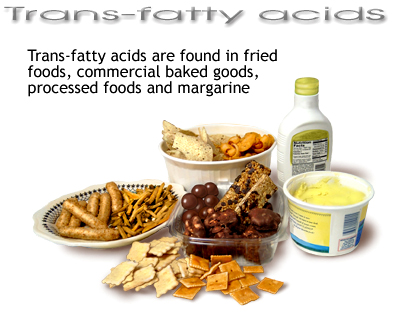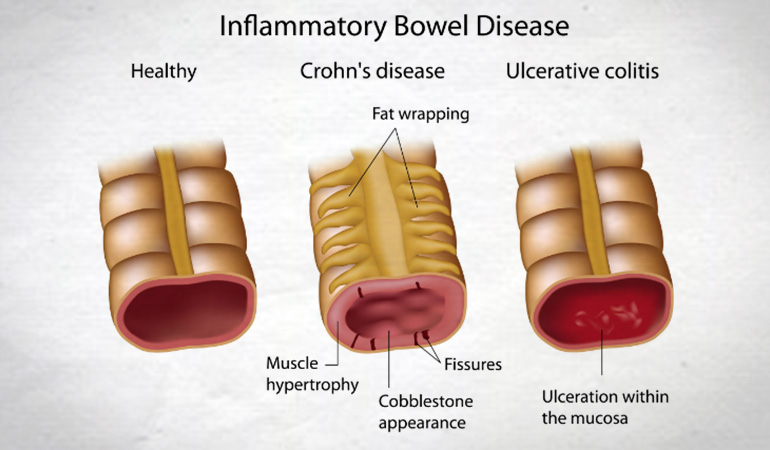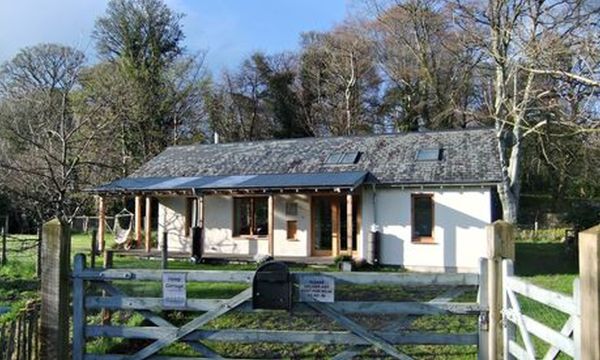 |
| Hemp, Cannabis sativa L. |
Hemp, Cannabis sativa L. is an angiosperm belonging to the cannabaceae family and cannabis genus. Probably one of the first plants to have been cultivated and used by humans throughout history and right around the world. Hemp has been an important plant used for medicine, as fibre for textiles and for the food and nutrition provided by its seed (the fruit of hemp is not a true seed, but an 'achene', a tiny nut covered by a hard shell). Hemp seed oil is particularly nutritious and valued for the numerous health benefits associated with it. Although its fatty acid composition is most often noted, with oil content ranging from around 25-35%, whole hemp seed is additionally comprised of approximately 20-25% protein, 20-30% carbohydrates and 10-15% fibre, along with an array of trace minerals. With a complete source of all essential amino and fatty acids, hemp seed and oil are a complete nutritional source, truly one of nature’s super-foods. In addition, constituents exist within the oil that have been shown to exhibit pharmacological activity.
Hemp seed oil contains linoleic acid (LA) and α-linolenic acid (LNA or ALA) as its major Omega-6 and Omega-3 polyunsaturated fatty acids (PUFA), respectively. These fatty acids comprise the most desirable contents of the oil, especially due to the ratios in which they exist. The 3:1 ratio of LA to LNA is optimal for nutrition. The additional presence of gamma-linolenic acid (GLA) in hemp seed oil ultimately makes its nutritional value superior to all other comparable seed oils.
The myriad of benefits attributable to Omega-3 PUFA include, but are not limited to; anti-cancer, anti-inflammatory, anti-thrombotic, anti-arrhythmic and hypo-lipidaemic (used to treat very high LDL [Low-Density Lipoprotein] or 'bad cholesterol' levels). In addition, a general increase in metabolism (promoting the burning of fat) and lowering of overall blood cholesterol levels has also been observed.
The results of fatty acid analysis are shown in Table 1 and further iterate that the relative ratios and composition of hemp seed oil fatty acids are ideal for human nutrition. As shown, LA concentrations ranged from 52-62% of total fatty acid composition while LNA concentrations ranged from 12-23%. The range of concentrations of fatty acids results from natural variations and factors, including processing and storage methods, as well as age of the samples being tested, could contribute to variability of the fatty acid profile.

As shown in Table 1, hemp seed oil is comprised primarily of linoleic acid (LA) and α-linolenic acid (LNA or ALA) in a 3:1 ratio. Other beneficial natural products such as β-sitosterol, which contributes hypo-cholesterolemic properties (cholesterol lowering) and the tocopherols (a generic term for vitamin E and compounds chemically related to it) which have both anti-oxidant and anti-cancer activities, are present in sufficient efficacious quantities. In addition, measurable amounts of terpenes, including β-caryophyllene and myrcene, cannabinoids such as cannabidiol (CBD) and phenolics were detected, including methyl salicylate (Oil of Wintergreen, a counter-irritant in ointments or liniments for muscle pain, also a flavouring agent) which itself has many health benefits enjoyed by people for centuries. Today aspirin or acetylsalicylic acid, a close relative of methyl salicylate, is one of the most widely used drugs in the world because of its antipyretic (prevents or reduces fever), anti-inflammatory and analgesic properties. Pharmacological effects of methyl salicylate are similar to those of aspirin and it is a beneficial component of hemp seed oil, even if present in trace quantities.

Another component of hemp seed oil with several reported activities is β-sitosterol. Although studies have primarily demonstrated the efficacy of β-sitosterol in reducing hypercholesterolaemia (the presence of high levels of cholesterol in the blood), additional anti-viral, anti-fungal and anti-inflammatory properties have been studied and observed. Within the intestine, phytosterols reduce cholesterol solubility by excluding it from micelles, thereby preventing its absorption. In addition, competition exists between the sterols and cholesterol for uptake into the intestinal mucosa. A quantitative representation of this can be seen in human studies. Patients given 500 mg of cholesterol daily in their diets in addition to 1 g of β-sitosterol showed decreased cholesterol absorption. Mean reduction levels were 42%, demonstrating the efficacy of β-sitosterol even at low concentrations. As shown in Table 1, sterol concentrations based on β-sitosterol were measured in sufficient quantities at 100-148 g/L.
Although β-sitosterol was the predominant sterol, other minor sterols may have contributed to this measurement. At these levels, many of β-sitosterol’s beneficial qualities will be obtainable. β-Sitosterol seems to be particularly effective in cholesterol uptake inhibition, especially when delivered through dietary fats. No appreciable decreases in efficacy were observed, even with long-term administration. In addition, lack of toxicity and little, or no side effects have been attributed to β-sitosterol, making it an attractive option for long-term cholesterol reducing therapy. Although not studied as extensively as its hypocholesterolemic properties, relevant anti-viral and anti-inflammatory activities of β-sitosterol have been shown.
The presence of several terpenes were confirmed in hemp seed oil, the most abundant of which were β-caryophyllene and myrcene, found at 740 mg/L and 160 mg/L, respectively (Table 1). Terpene compounds, in general, are primarily found in the essential oil of cannabis rather than in the hemp seed oil as a result of their production in the glandular structures (trichomes) on the aerial portions of the plant. These compounds are a component of the characteristic aroma of cannabis and may impart some of these properties to the hemp seed oil. Additional benefits may be provided to the oil as well. Some previously noted pharmacological properties of β-caryophyllene would include anti-inflammatory and cytoprotective (protects cells against harmful agents) activities which may too be active in the hemp seed oil. In addition, it has been reported that myrcene exhibits anti-oxidant properties. The presence of β-caryophyllene and myrcene, even if only present as contamination components, add beneficial value to an already nutritionally important food product.
 |
| Glandular structures (trichomes) |
The production and storage of both CBD and THC occur in the glandular structures of the plant and the concentrations of CBD are typically much higher than THC in most fibre and oil varieties of hemp. �Cannabidiol (CBD) has been shown to possess several desirable pharmacological properties. Although the levels of CBD detected in the oil were low at 10 mg/kg, its presence is significant because it has documented anti-convulsant, anti-epileptic and anti-microbial properties. CBD has been reported to reduce tremors in dystonic movement disorders with minimal side effects. Patients receiving doses of CBD ranging from 100-600 mg/day had tremor reductions of 20-50%. Analgesic and anti-inflammatory potential has been reported with CBD as well as anti-microbial activity, specifically, inhibiting growth in gram-positive bacteria such as Streptomyces griseus and Staphylococcus aureus. These organisms are particularly sensitive to extracts of cannabis in slightly acidic culture medium even at dilutions as low as 5 ppm. Terpenoid compounds have been identified as present in hemp seed oil. Health benefits may be gained from their presence even at concentrations similar to that of CBD. The major terpenes identified have been cited as having anti-inflammatory, anti-allergenic, and cytoprotective pharmacological properties.

 As a result of the change in dietary habits with the intake of trans fatty acids increasing dramatically, studies have shown conclusively that trans fatty acids increase total cholesterol levels and diminish the levels of high density lipoprotein (HDL, 'good' cholesterol). By supplementing the diet with high levels of unsaturated cis* fatty acids (increasing the levels of HDL in the body while decreasing bad cholesterol) some of the negative effects can be reversed. With respect to modern diets, the amount of LA consumed compared to the amount of LNA consumed has increased exceptionally in the past 100-150 years.
*cis fatty acids - the bend in the carbon chain is much more
pronounced in the cis isomer compared to the trans isomer. For this
reason, cis fatty acids do not solidify as readily as trans fatty
acids. Due to the larger bend, the cis isomers cannot line up next to
one another in as ordered a fashion as the trans isomers. While trans
fatty acids are uncommon in natural fatty acids, they form readily
when polyunsaturated fatty acids from plants are 'partially
hydrogenated' chemically (done commercially to make plant
fatty acids more solid and improve shelf-life). Epidemiological
studies correlate consumption of trans fatty acids with increased
risk of heart disease.
As a result of the change in dietary habits with the intake of trans fatty acids increasing dramatically, studies have shown conclusively that trans fatty acids increase total cholesterol levels and diminish the levels of high density lipoprotein (HDL, 'good' cholesterol). By supplementing the diet with high levels of unsaturated cis* fatty acids (increasing the levels of HDL in the body while decreasing bad cholesterol) some of the negative effects can be reversed. With respect to modern diets, the amount of LA consumed compared to the amount of LNA consumed has increased exceptionally in the past 100-150 years.
*cis fatty acids - the bend in the carbon chain is much more
pronounced in the cis isomer compared to the trans isomer. For this
reason, cis fatty acids do not solidify as readily as trans fatty
acids. Due to the larger bend, the cis isomers cannot line up next to
one another in as ordered a fashion as the trans isomers. While trans
fatty acids are uncommon in natural fatty acids, they form readily
when polyunsaturated fatty acids from plants are 'partially
hydrogenated' chemically (done commercially to make plant
fatty acids more solid and improve shelf-life). Epidemiological
studies correlate consumption of trans fatty acids with increased
risk of heart disease.
This disparity has disrupted the proper balance of dietary essential fatty acids that is considered nutritionally optimal. In addition to the lack of these essential fatty acids in the diet, factors such as stress and disease weaken the enzymatic activity that promotes the conversion of LA to GLA. Therefore, a supplementation of LA can be helpful to alleviate this potential deficiency. In an ideal diet, the daily consumption of fats should not exceed 15-20% of total caloric intake. Approximately one-third of these fats should be the essential fatty acids in their proper ratio. For a 2500 calorie/day diet, LA intake should be 9-18 grams/day, and LNA intake should be 6-7 g/day. This goal can easily be accomplished through the daily consumption of 3 to 5 tablespoons of hemp seed oil.
 |
| World Health Organisation Dietary Recommendations |
Although these are the ideal amounts to maintain a healthy, balanced diet, certain stresses to the body warrant increased consumption of essential fatty acids, particularly the Omega-3 PUFA such as LNA. Omega-3 PUFA have been reported to have an inhibitory effect on cancer and tumour growth. Increased consumption of Omega-3 PUFA have not been shown to exhibit any negative side effects, but their beneficial qualities have been repeatedly confirmed. In addition to their anti-cancer properties, Omega-3 PUFA have been shown to lower blood pressure and blood cholesterol levels, help normalise fat metabolism and decrease insulin dependence in diabetics, increase overall metabolic rate and membrane fluidity and exhibit anti-inflammatory properties, specifically with regard to relieving arthritis. The benefits of Omega-3 PUFA are not only present when taken in large quantities but the regular intake of recommended levels (2-2.5% of caloric intake/day) can be sufficient to provide many of its nutritional qualities.
 In addition to all of these positive health benefits there seems to be a complete lack of negative effects from its consumption. To date, there has been no reported cases of toxicity from the ingestion of hemp seed oil. Toxicity has also not been observed with any of the other constituents that were found as 'contaminants', which are primarily the cannabinoids. One reason for the lack of negative side effects from excessive ingestion of hemp seed oil is specifically related to the ratio of LA:LNA. Because most oils do not contain the optimum ratio of Omega-6 and Omega-3 PUFA, they tend to promote the accumulation of metabolic intermediates that in turn hinder fatty acid metabolism. The properly balanced hemp seed oil does not promote an over-accumulation of certain metabolic products and all of the fatty acid metabolic pathways have the necessary intermediates to work efficiently regardless of the quantities consumed.
In addition to all of these positive health benefits there seems to be a complete lack of negative effects from its consumption. To date, there has been no reported cases of toxicity from the ingestion of hemp seed oil. Toxicity has also not been observed with any of the other constituents that were found as 'contaminants', which are primarily the cannabinoids. One reason for the lack of negative side effects from excessive ingestion of hemp seed oil is specifically related to the ratio of LA:LNA. Because most oils do not contain the optimum ratio of Omega-6 and Omega-3 PUFA, they tend to promote the accumulation of metabolic intermediates that in turn hinder fatty acid metabolism. The properly balanced hemp seed oil does not promote an over-accumulation of certain metabolic products and all of the fatty acid metabolic pathways have the necessary intermediates to work efficiently regardless of the quantities consumed.
Resources:
Journal of Nutraceuticals, Functional & Medical Foods
Fatty Acids and Triacylglycerols
The Composition of Hemp Seed Oil and Its Potential as an Important Source of Nutrition
Hemp ... Seed Oil: Analytical and Phytochemical Characterization of the Unsaponifiable Fraction
American Chemical Society
Hemp seed oil: A source of valuable essential fatty acids
Study of Thiosemicarbazone Derivative of Essential Fatty Acid
Occurrence of "omega-3" stearidonic acid ... in hemp (Cannabis sativa L.) seed
International Hemp Association






































